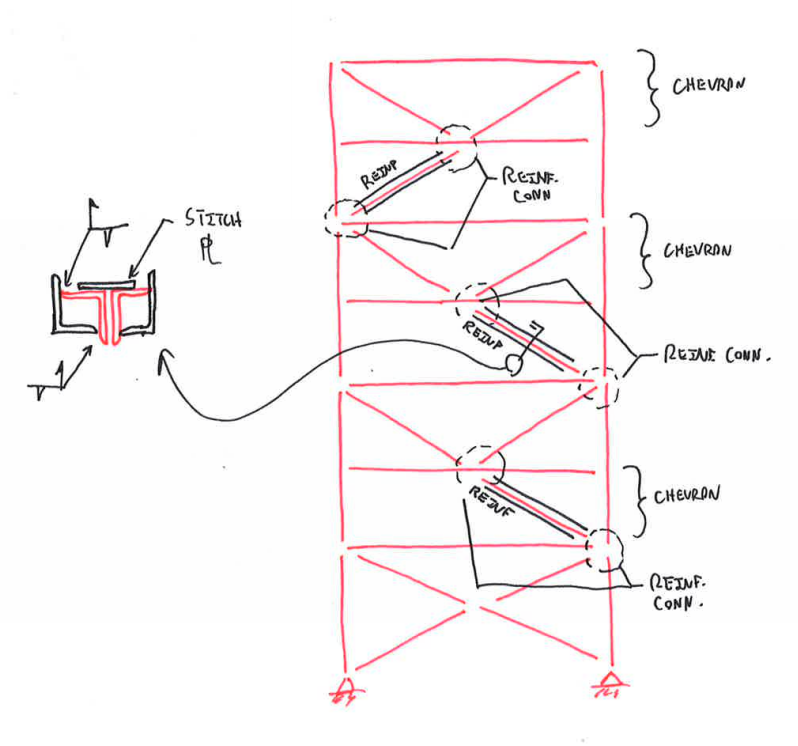SKJ25POL
Structural
- Mar 4, 2011
- 358
I have few questions on bracings in steel frames:
1- Shall the bracing configuration stays the same in all floors/levels of the bay that is gonna be braced? I mean does it need all floors be like x-braced?
2- Can we use tension/tension bracing (such as x-bracing) in one story and tension/compression bracing in the below story? Does this mess the load pass or not?
3- if we have a one bay bracing situation and for some reasons(cutting an opening in the wall) one half of bracing in one direction get cut(please see the attachment) is the other reaming half work or can be of use?
What is the best solution for the attached situation.
How I can compensate the cut bracings?
I appreciate for kind advise.
P.S. Please don't make a comment of "ask more senior engineer in your office" - if I had that choice I would and not bothering you. Thanks
1- Shall the bracing configuration stays the same in all floors/levels of the bay that is gonna be braced? I mean does it need all floors be like x-braced?
2- Can we use tension/tension bracing (such as x-bracing) in one story and tension/compression bracing in the below story? Does this mess the load pass or not?
3- if we have a one bay bracing situation and for some reasons(cutting an opening in the wall) one half of bracing in one direction get cut(please see the attachment) is the other reaming half work or can be of use?
What is the best solution for the attached situation.
How I can compensate the cut bracings?
I appreciate for kind advise.
P.S. Please don't make a comment of "ask more senior engineer in your office" - if I had that choice I would and not bothering you. Thanks

